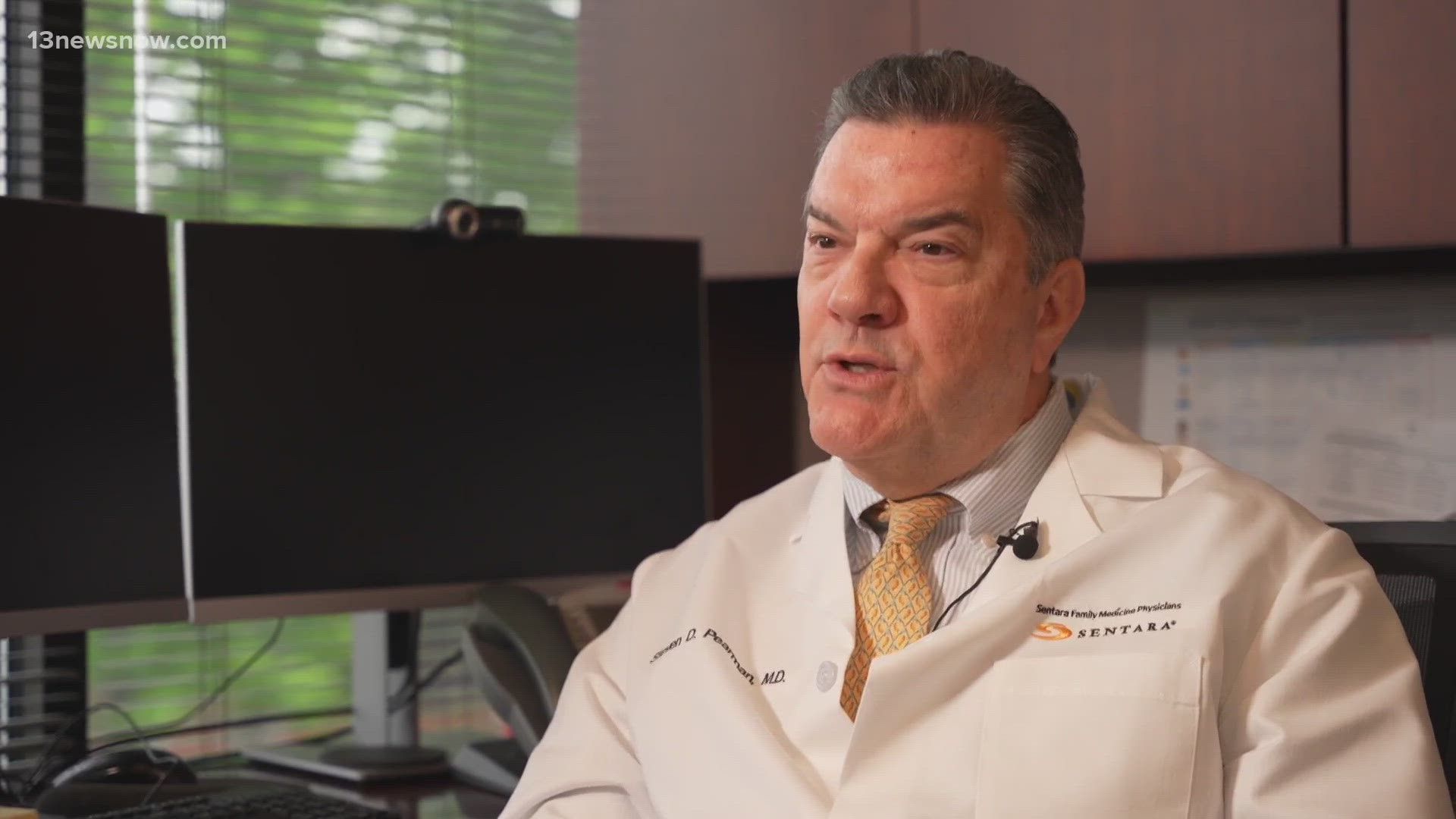NORFOLK, Va. — There's a simple answer as to why we're waiting longer these days to get in to see a doctor. It's supply and demand: too many patients, too few doctors.
A recent survey by Merrit Hawkins shows average appointment wait times nationally are up 24% since 2004. Today, you could wait up to 27 days to see a cardiologist, 31 days to see an OB/GYN, and 17 days to see an orthopedic surgeon.
While wait times to see a primary care physician are down, that soon may change.
"There's a predicted shortfall of up to 120,000 providers for primary care over the next five to 10 years," Dr. Steve Pearman of Sentara told us.
Pearman, who is VP of medical operations for Sentara Medical Group, said primary care isn't where the money is in medicine. If you're a new patient, you may have to wait up to six months to get an appointment.
With as many as 11,000 people a day signing up for Medicare and an aging population utilizing more resources, something has to change.
"I am concerned about access," Pearman said. "I spend a lot of my time with access. I think we have a unique approach to doing that, and the answer is don't do the things we've always done."
Pearman added that not every patient needs to see a doctor. Instead, he thinks "care teams" may be the future.
Instead of a doctor, you may be attended to by a physician's assistant or a nurse practitioner who may be able to help you sooner and spend more time with you.
"They're excellent and sometimes they do a better job at certain parts of care than the physician does," Pearman said.
Telehealth and virtual visits also can bring down appointment wait times and meet your need. In January, doctors with Sentara answered 160 chat messages and 130 phone messages, freeing up office appointment times.
"Not every specialist concern needs a specialist appointment," Pearman stated.
Let's blame Dr. Google for this one: we all know someone who Googles their symptoms, diagnoses themselves, then makes an appointment with a specialist.
"If you have a headache for three days, you don't necessarily need to see a neurologist," Pearman said.
You may only need a primary care physician, but a number of health insurance plans today allow self-referrals to a specialist. So, you wait for an appointment with a specialist you don't need to see and take an appointment slot from someone who needs it. That's not good for anyone's health.
Finally, telehealth is a great option for sore throats and UTIs... and when all you need is a simple answer to a question, try email.
What's also making appointment wait times longer today are more doctors are retiring and recruiting new physicians is a challenge.
"Newer, younger physicians are really focused on work-life balance. We've got a really hard job with lots of work, and I've got a workforce that doesn't want to work hard. What do I do? How do I fix that," Pearman asked.
Consider this: urgent care centers are an option for a host of medical issues. Also, see if your doctor has a cancellation list and get on it. You can also consider seeing your doctor's partner at their practice.

